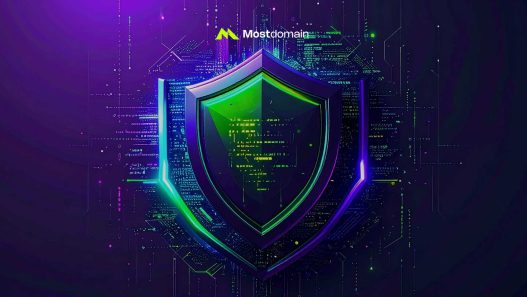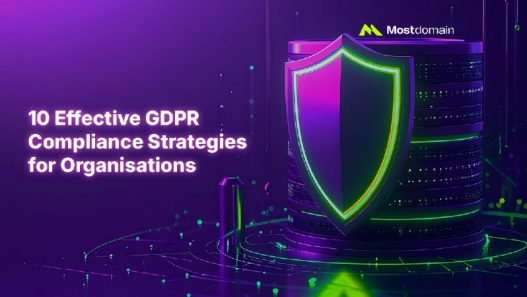This website security checklist 2025 reveals how cybercrime costs are projected to reach a staggering $10.5 trillion annually, making website security not just a technical necessity but a business survival strategy. Yet, most website owners still view security and SEO as separate concerns—a costly mistake that could tank both their search rankings and their reputation overnight.
Website security has evolved from a nice-to-have feature to a critical Google ranking factor. When your site gets hacked, you don’t just lose data; you lose search visibility, user trust, and potentially years of SEO efforts. The good news? A properly secured website doesn’t just protect against cyber threats—it actively improves your search engine performance.
This comprehensive website security checklist 2025 will guide you through 15 essential steps that serve a dual purpose: fortifying your site against evolving cyber threats while boosting your SEO rankings. From implementing HTTPS to advanced threat monitoring, each step is designed to enhance both security and search visibility.
Ready to transform your website into a fortress that Google loves? Let’s dive into the strategies that will keep you ahead of both hackers and competitors in 2025.
Learn About: Emergency WordPress Malware Cleanup
Why Does Website Security Directly Impact Your SEO Rankings?
Google’s algorithm has made it crystal clear: website security is a ranking factor. Since 2014, HTTPS has been an official ranking signal, and recent updates have only strengthened this connection. But the relationship between security and SEO goes far deeper than just SSL certificates.
When search engines crawl your site, they’re not just analyzing content—they’re evaluating trustworthiness. A compromised website triggers immediate red flags that can result in complete removal from search results. Even worse, recovery can take months, even after fixing security issues.
“Security isn’t just about protecting data anymore—it’s about protecting your organic visibility. A single security incident can undo years of SEO work.” – Search Engine Security Expert
The connection becomes even more critical when considering user behavior signals. Visitors who see “Not Secure” warnings in their browsers immediately bounce, sending negative signals to Google about your site’s quality. High bounce rates, low dwell time, and poor user engagement all contribute to ranking drops.
| Security Issue | SEO Impact | Recovery Time |
| Malware Infection | Complete deindexing | 3-6 months |
| SSL/HTTPS Missing | 5-10% ranking drop | 2-4 weeks |
| Site Hacking | Blacklist + penalties | 6-12 months |
| Slow Security Loading | Mobile ranking loss | 1-2 months |
What Are the Non-Negotiable Security Fundamentals Every Website Needs?
✅ HTTPS Implementation: Your First Line of Defense
HTTPS implementation remains the foundation of website security in 2025. It’s not just about that green padlock—it’s about establishing trust with both users and search engines. Sites without HTTPS now face explicit “Not Secure” warnings in major browsers, instantly damaging credibility.
The SEO benefits are immediate and measurable. HTTPS sites consistently outrank their HTTP counterparts, all other factors being equal. Google’s mobile-first indexing particularly favors secure connections, making HTTPS essential for mobile search visibility.
Implementation Steps:
- Purchase SSL certificate from reputable provider
- Install certificate on web server
- Update all internal links to HTTPS
- Set up 301 redirects from HTTP to HTTPS
✅ Strong Password Policies: Beyond Basic Protection
Weak passwords remain the number one security vulnerability in 2025. With AI-powered brute force attacks becoming more sophisticated, your password strategy needs to evolve beyond simple complexity requirements.
Multi-factor authentication (MFA) is no longer optional—it’s essential. Sites with MFA experience 99.9% fewer account takeover attempts, directly protecting the admin access that could compromise your entire SEO strategy.
Password Security Checklist:
- ✅ Minimum 12 characters with mixed case, numbers, symbols
- ✅ Unique passwords for each admin account
- ✅ MFA enabled for all administrative access
- ✅ Regular password rotation (quarterly)
- ✅ Password manager implementation
✅ Regular Software Updates: Staying Ahead of Vulnerabilities
Outdated software is a hacker’s dream and Google’s nightmare. Security vulnerabilities in content management systems, plugins, and themes create entry points that can lead to complete site compromise. The OWASP Top 10 consistently lists outdated components as a critical risk.
Search engines actively scan for known vulnerabilities. Sites running outdated software with known security flaws may face ranking penalties even before an actual breach occurs.
| Update Type | Frequency | Risk Level |
| Core CMS | Immediately | Critical |
| Security Plugins | Weekly | High |
| Themes | Monthly | Medium |
| Non-Critical Plugins | Monthly | Medium |
✅ Web Application Firewall (WAF): Your Digital Bodyguard
A Web Application Firewall acts as a filter between your website and potential threats, blocking malicious traffic before it reaches your server. Modern WAFs use machine learning to identify and stop emerging attack patterns in real-time.
The SEO advantage is significant: WAFs prevent the performance degradation that comes with handling malicious requests, maintaining fast load times that Google prioritizes in rankings.
Discover: WordPress Security Crisis Solutions
How Can You Protect User Data While Improving Search Performance?
✅ Data Encryption: Securing Information at Every Level
Data encryption extends far beyond HTTPS. In 2025, comprehensive encryption strategies protect data at rest, in transit, and during processing. This multi-layered approach not only safeguards user information but demonstrates the kind of security posture that search engines reward.
Database encryption, file-level encryption, and encrypted backups create redundant protection layers. When users trust your site with their data, they engage more deeply—behavior signals that directly boost SEO performance.
✅ Privacy Policy and GDPR Compliance: Building Trust and Authority
Comprehensive privacy policies and GDPR compliance have become ranking factors in their own right. Google’s emphasis on EEAT (Experience, Expertise, Authoritativeness, Trustworthiness) means that transparent data handling practices contribute to topical authority.
Clear privacy policies reduce bounce rates by building user confidence. Visitors who understand how their data is protected are more likely to complete forms, make purchases, and return to your site—all positive engagement signals.
Compliance Checklist:
- ✅ Detailed privacy policy covering all data collection
- ✅ Cookie consent management system
- ✅ Data retention and deletion procedures
- ✅ User rights implementation (access, portability, deletion)
✅ Secure Forms and Payment Processing: Protecting Critical Interactions
Secure form processing protects the most vulnerable points of user interaction. Forms without proper validation and encryption are prime targets for injection attacks that can compromise your entire site.
PCI DSS compliance for payment processing isn’t just about avoiding fines—it’s about maintaining the trust that keeps users engaged. Secure checkout processes reduce cart abandonment and improve conversion signals that search engines value.
Which Security Monitoring Tools Should You Implement Right Now?

Following our website security checklist 2025, monitoring tools provide the early warning systems that prevent minor issues from becoming major SEO disasters. Security monitoring tools provide real-time visibility into potential threats before they can compromise your site’s integrity or search visibility.
✅ Real-Time Security Monitoring: Early Detection Systems
Security monitoring tools provide the early warning systems that prevent minor issues from becoming major SEO disasters. Real-time monitoring catches suspicious activity before it can compromise your site’s integrity or search visibility.
Automated monitoring reduces the mean time to detection (MTTD) from hours to minutes. Quick response times prevent the extended downtime that can severely impact search rankings.
Essential Monitoring Features:
- File integrity monitoring
- Login attempt tracking
- Malware scanning
- Performance monitoring
- Uptime tracking
✅ Backup and Recovery Solutions: Your Safety Net
Automated backup systems provide the ultimate insurance policy for both security and SEO. Regular, tested backups ensure that even in worst-case scenarios, you can restore your site quickly without losing search ranking momentum.
Cloud-based backup solutions with geographic redundancy protect against local disasters while maintaining the fast recovery times essential for minimizing SEO impact.
| Backup Type | Frequency | Retention |
| Full Site Backup | Daily | 30 days |
| Database Backup | Every 6 hours | 14 days |
| File System Backup | Daily | 7 days |
| Configuration Backup | Weekly | 90 days |
✅ Vulnerability Scanning: Proactive Threat Detection
Regular vulnerability assessments identify security weaknesses before attackers can exploit them. Automated scanning tools check for OWASP Top 10 vulnerabilities, outdated software, and configuration issues that could compromise both security and SEO.
The SEO benefit is preventive: by identifying and fixing vulnerabilities proactively, you avoid the ranking penalties associated with security incidents.
Read More: Expert-Tested WordPress Security Plugins
What Advanced Security Measures Give You a Competitive Edge?
Beyond the essential steps in our website security checklist 2025, advanced security measures create competitive advantages that set your site apart. These sophisticated protection layers not only enhance security but significantly boost SEO performance through improved user experience and search engine trust signals.
Content Security Policy (CSP): Advanced Browser Protection
Content Security Policy implementation provides sophisticated protection against cross-site scripting attacks while improving page load performance. CSP headers tell browsers exactly which resources are authorized, preventing malicious code injection.
The performance benefits directly impact Core Web Vitals, Google’s key user experience metrics. Sites with optimized CSP often see improvements in Cumulative Layout Shift and First Input Delay.
Security Headers: Comprehensive Browser Security
Security headers provide multiple layers of browser-based protection that enhance both security and user experience. Headers like HSTS, X-Frame-Options, and X-Content-Type-Options prevent common attack vectors while improving site performance.
Proper header implementation can improve security scores in SEO tools, contributing to overall site authority and trustworthiness signals.
Essential Security Headers:
- ✅ Strict-Transport-Security (HSTS)
- ✅ X-Frame-Options
- ✅ X-Content-Type-Options
- ✅ Referrer-Policy
- ✅ Permissions-Policy
Bot Protection: Filtering Malicious Traffic
Advanced bot protection systems distinguish between legitimate search engine crawlers and malicious bots. Protecting your site from bad bots improves server performance and ensures that your limited crawl budget is used efficiently by real search engines.
Modern bot protection uses behavioral analysis and machine learning to make real-time decisions about traffic legitimacy, maintaining SEO accessibility while blocking threats.
What Are the Biggest Security Mistakes That Kill SEO Performance?
The “It Won’t Happen to Me” Mentality
Many website owners delay security implementation, believing their site isn’t valuable enough to target. This misconception leads to reactive rather than proactive security, often resulting in catastrophic SEO consequences when attacks inevitably occur.
Small business websites are actually preferred targets because they typically have weaker security while still processing valuable user data. The reputational and SEO damage from a breach often exceeds the cost of proper security implementation by orders of magnitude.
Ignoring Mobile Security
With mobile-first indexing, mobile security has become inseparable from SEO success. Sites that don’t optimize security for mobile users face double penalties: poor user experience and reduced search visibility.
Mobile security requires specific considerations: faster loading secure pages, touch-optimized secure forms, and mobile-specific threat protection. Ignoring these elements undermines both security and mobile search performance.
Treating Security as a One-Time Implementation
Security maintenance is an ongoing process, not a one-time setup. Sites that implement security measures but fail to maintain them gradually become vulnerable as threats evolve and software ages.
The SEO impact compounds over time: outdated security leads to performance degradation, vulnerability exposure, and eventual search engine penalties. Regular maintenance schedules prevent these gradual declines.
Monthly Security Maintenance Tasks:
- ✅ Software and plugin updates
- ✅ Security scan results review
- ✅ Backup verification
- ✅ Access audit and cleanup
- ✅ Performance monitoring analysis
Ready to Secure Your Digital Future?
The convergence of website security and SEO in 2025 makes implementing this website security checklist 2025 essential for online success. Every security measure you implement serves dual purposes: protecting your digital assets and enhancing your search engine visibility.
Starting with the fundamentals—HTTPS, strong passwords, and regular updates—provides immediate protection and SEO benefits. Advanced measures like WAF implementation and real-time monitoring create competitive advantages that compound over time.
The cost of inaction continues to rise as cyber threats evolve and search engines raise security standards. Proactive security implementation protects your investment in SEO while building the foundation for sustainable organic growth.
Remember: in 2025, website security isn’t just about preventing attacks—it’s about enabling success. A secure website is a successful website, and a successful website ranks well in search engines.
Take action today: Begin with our essential checklist, implement core security measures, and build the secure, SEO-friendly website that will dominate search results while protecting your users’ trust.
References
- Cybersecurity Ventures. (2025). 2025 Cybercrime Report: Annual Damage Costs. Retrieved from cybersecurityventures.com
- Google Developers. (2024). HTTPS as a Ranking Signal. Google Search Central Documentation.
- OWASP Foundation. (2024). OWASP Top 10 Web Application Security Risks. Retrieved from owasp.org
- SentinelOne. (2025). Cyber Security Trends for 2025. Industry Analysis Report.
- IBM Security. (2024). Cost of a Data Breach Report 2024. IBM Institute for Business Value.
- Check Point Software. (2025). Top Cloud Security Trends in 2025. Technical Whitepaper.
- Splunk Inc. (2025). Top Cybersecurity Trends Shaping 2025. Industry Research Report.
- TechRepublic. (2024). Top 5 Cyber Security Trends for 2025. Technology Analysis.
- CompTIA. (2025). State of Cybersecurity 2025. Industry Survey Report.
Google Search Central. (2024). Core Web Vitals and Page Experience Guidelines. Official Documentation.





















